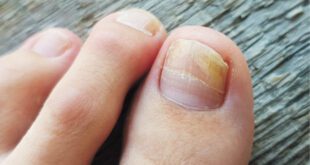With computers, cell phones, tablets and other digital screens becoming a routine part of our daily lives, digital eye strain is on the rise. A recent survey revealed that 65% of Americans experience symptoms of eye strain, and the more digital devices they use, the greater the severity and frequency of symptoms.
Naturally, there are some who are quick to blame this on the blue light emitted by digital devices. But is digital blue light really worse for your eyes than the blue light from sunlight? And how much of the bias against blue light is related to its actual effects, and how much is based on rumor and myth? First, let’s look at how digital blue light differs from natural sunlight.
DIFFERENCE BETWEEN BLUE LIGHT AND SUNLIGHT
1. Spectral composition. Sunlight contains a full spectrum of color wavelengths, including blue light, which is balanced by complementary wavelengths like red and infrared. Digital devices, however, emit predominantly blue wavelengths without the warm, balancing colors. Adding to it, our devices’ LED
backlighting concentrates this blue light directly at our eyes.
2. Timing of blue light exposure. The sun’s full spectrum of light is a key part of circadian rhythm regulation, which affects our sleep quality and overall health. The sun delivers more blue light in the morning and daytime, promoting alertness. The blue light gradually wanes as night approaches, enabling our brains to wind down in preparation for sleep. Digital devices emit blue light continuously, disrupting this natural cycle and diminishing sleep quality, which can further burden eyes.
3. Distance and length of exposure. Even though the blue light from the sun is much stronger than what is emitted by digital screens, its power is suffused by mitigating colors and the great distance it travels. The closeness of digital screens, and the often-long hours spent staring at them, can lead to significant cumulative, concentrated blue light exposure.
BLUE LIGHT AND YOUR EYE HEALTH: SEPARATING FACT FROM FICTION
Now that we understand how sunlight and the blue light from digital screens differ, let’s compare the myths and facts about blue light and its effects on the eyes using a little quiz.
1. True or false: Blue light is always harmful to the eyes.
False. As stated previously, blue light is a natural part of the sun’s light spectrum and plays an important role in regulating our circadian rhythms and daytime alertness. Obviously, staring directly at the sun can be hazardous to your eyes, but diffuse sunlight is part of everyday life. It is the excessive exposure to blue light from digital devices, particularly close to bedtime, that is generally responsible for eye strain.
2. True or false: Blue light from digital devices causes permanent eye damage.
False. While you may have heard that a few studies on lab animals suggest excessive blue light exposure could potentially damage the cells of the retina, there is no current scientific evidence that blue light from digital devices is powerful enough to cause serious or permanent eye damage. However, eye strain is a real problem, so using these devices mindfully is always a good idea.
3. True or false: Digital eye strain relates more to how we use our devices than to the blue light they emit.
True. Using our devices for prolonged periods, often without blinking enough or taking regular breaks, and using them too close to bedtime, is what causes the majority of eye strain conditions. You can ease your exposure to blue light by adjusting your device’s settings, including enabling “night mode” warmer color tones, and reducing screen brightness to match room lighting to cut down on glare.
4. True or false: Specialized glasses can protect against blue light-related eye strain.
Maybe. However, the science on this is mixed. Most blue light filtering glasses block about 10-25% of blue light wavelengths, which is relatively low. While some people report some relief with prolonged use of high-quality blue light filtering glasses, the overall evidence of eye strain reduction, melatonin protection, and sleep improvement is narrow and inconsistent.
Before you go out and buy blue light filtering glasses to help ease eye strain, talk to your eye doctor about what type of lens technology they recommend.
Specialty computer glasses designed to reduce glare actually do help ease eye strain, so they may be a better investment for your overall eye comfort.
And remember, protection from the powerful and potentially harmful rays of the sun is crucially important. So, invest in high-quality sunglasses providing 100% UV protection, and wear them whenever you’re outside during daylight hours.
5. True or false: Blue light from digital devices can suppress melatonin production.
True. Melatonin is the hormone that regulates the normal sleep-wake cycle. Blue light exposure from staring at digital screens can reduce melatonin production, adversely impacting healthy sleep patterns. In fact, multiple studies have shown that exposure to blue light before bedtime makes it harder to become drowsy and fall asleep, limits important REM cycles, and causes more incidents of waking up throughout the night.
So, once the sun sets, switch to night settings (or set them to auto), reduce your screen’s brightness, and, if you can manage it, stop using your screens 2-3 hours before you plan to hit the hay. Of course this can be difficult, but try it out. You might be surprised by how much better your sleep quality is, and how soothed your eyes feel as a result.
GIVE YOUR EYES REGULAR BREAKS FROM SCREENS
To help prevent and reduce eye strain, follow the 20-20-20 rule: Every 20 minutes of screen time, stare 20 feet into the distance for at least 20 seconds. In addition, be sure to deliberately blink 10-20 times every minute to spread your tear film across your eyes. It might seem odd to have to remind yourself to blink, but staring at close-up devices often disrupts normal blinking, leading to dryness, irritation and eye strain.
By adopting healthy screen habits, you can do a lot of help reduce or even eliminate related eye strain. However, if excessive dryness, redness or irritation persist, contact your local Lake Eye for common sense ways to keep your eyes and vision clear, healthy and oh-so comfortable.
352-632-2020
 Central Florida Health and Wellness Magazine Health and Wellness Articles of the Villages
Central Florida Health and Wellness Magazine Health and Wellness Articles of the Villages



